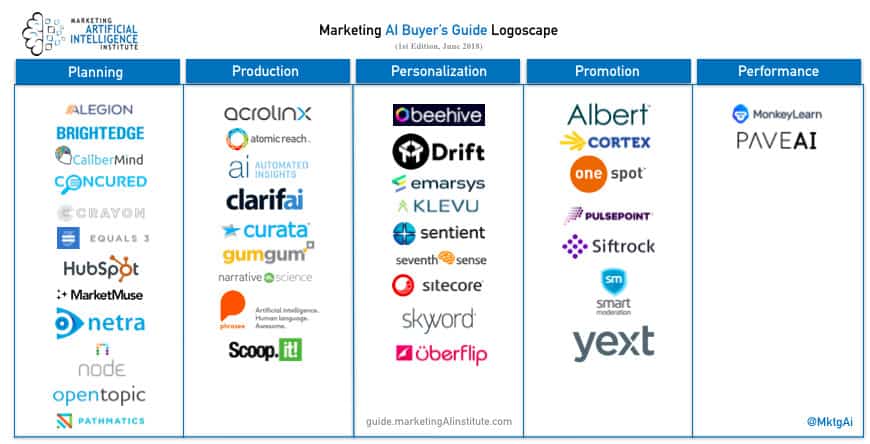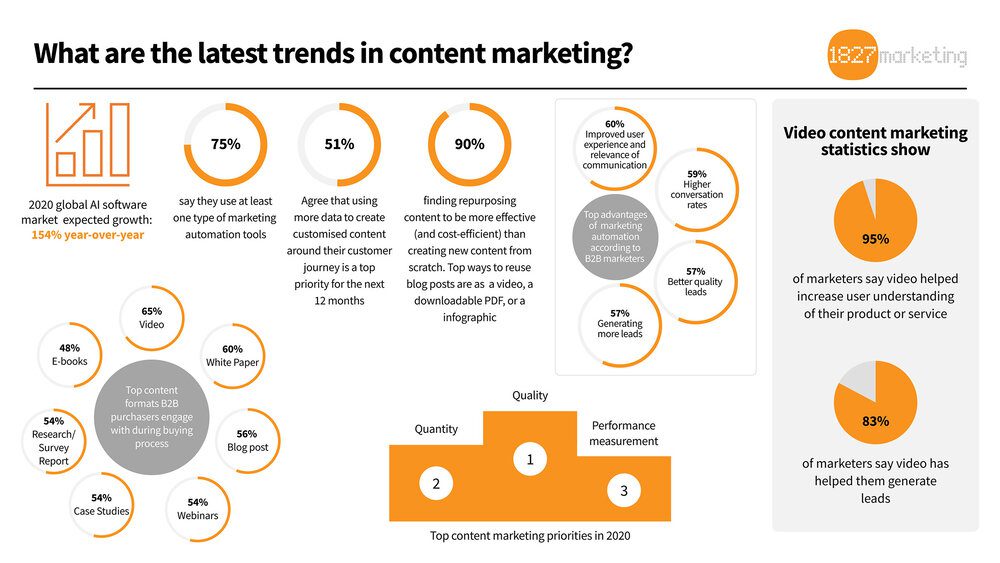Content marketing is a tried-and-true digital marketing strategy that’s been around for more than 50 years (yes, it predates the Internet).
But much like its relative creative advertising, content marketing has evolved in recent years and become something of a buzzword.
For beginners, it can be hard to know where to start with this somewhat nebulous practice.
How can you tell when your business is doing content marketing right? And more importantly, how should you go about making sure you’re doing the most of what content has to offer?
Below you will find a list of common google searches (questions) about content marketing, which have been answered:
What is content marketing and how does it work?
Content marketing is any form of digital marketing that involves creating, distributing, and promoting content to attract an audience. A good example is the Adobe Content Marketing Institute (ACMI).
The Institute regularly publishes new guides and how-to content for marketers who want to learn more about the subject.
In simple terms, content marketing is about creating valuable content (such as blog posts, ebooks, webinars, or videos) that attract the right type of customer for your business or organization, then sharing this content with them so they can engage with it and take action as a result (learn, buy or subscribe to your service).
How can content marketing be used effectively to generate leads?
To use content marketing well, you need an audience. In other words, if you don’t already have a customer base for your business, it is unlikely that you will get many leads from publishing content.
Similarly, if your marketing funnel is not in place, it’s unlikely you’ll see any leads from creating and distributing content.
That said, creating valuable content that attracts the right types of people for your business can help bring in leads when it’s backed up by a well-designed conversion process. This means having landing pages that are specifically geared toward the content you’re producing, as well as an email follow-up and nurture process.
How do I know which types of content to produce?
This is a loaded question and one that depends on your business or organization’s goals.
Are you trying to persuade people to take action (e.g., download an ebook, attend a webinar, or call you for more information)? Or are you trying to make your brand more visible and create awareness?
These two goals require very different types of content.
For persuasion, try using blog posts with very clear “calls to action” and the kind of research that makes people want to take action (e.g., “7 Quick Tips to…”).
For awareness, use blog posts that offer expert advice or insight into a specific topic relevant to your brand (e.g., how to overcome challenges in the workplace, create better communications skills, etc.)
What type of content will get my audience’s attention?
If you want people to pay attention, choose topics that are newsworthy, timely, or provide unique insight and value to your customers.
For example, if you’re in the B2B space it could be a new way of looking at a common problem or an innovative approach to an everyday task that will attract the right kinds of people for your business.
Again, you’ll likely have more success with one type of content than another depending on your business goals and audience.
What are examples of content marketing?
You’re probably already familiar with some of the content marketing examples, brands, and businesses that have had success with it.
The most common ones include blogs, industry-specific guides (e.g., annual reports or white papers), case studies, webinars, ebooks, and videos.
What are content marketing tools?
To publish, share and promote content easily you might want to consider using one or more of the following tools:
Social media: To distribute your written content (e.g., blog posts) through social media networks such as Facebook, Twitter, LinkedIn, and Google+.
Content management system (CMS): A web application that lets you upload, publish and manage your content effectively.
Some of the most popular CMS are Drupal, WordPress, and Joomla.
Content scheduling: A tool that helps you plan when to publish your content so it is more likely to be seen by your audience (and thus lead to conversions).
Examples include SocialOomph and BufferApp.
Email marketing: A tool that lets you send emails to subscribers of your blog.
The most popular email marketing tools for small businesses are GetResponse, MailChimp, and Campaigner.
What are content marketing methods?
There are three main content marketing methods:
- Direct – where you publish blog posts, videos, or other types of content on your own website (or to a third-party site such as SlideShare).
- Guest blogging/guest posting – when you write and share valuable content on someone else’s website (in exchange for linking back to your website or blog).
- Video marketing – where you publish and promote videos on sites like YouTube, Vimeo, or Wistia.
How do you automate content marketing?
Content automation is the process of scheduling your content to be published automatically at certain times or based on specific triggers.
Tools you can use to automate content marketing include:
- Social media management tools (e.g., HootSuite)
- Content distribution services (such as Outbrain)
- Content and social media monitoring tools (e.g., SocialFlow)
- Scheduling tools (e.g., BufferApp and Distribber)
What makes good content?
Everyone seems to have their own opinion about what makes good content, but based on my experience most audiences will find the following types of content valuable:
- Informative (e.g., tips and advice, how-to guides)
- Innovative (e.g., something new and different)
- Educational or inspirational (e.g., solving common problems, providing useful information)
- Focused (e.g., discusses one or two specific topics in detail)
- Practical (e.g., provides step-by-step instructions for achieving something)
Can AI create content?
Yes, it can. In fact, AI and machine learning are increasingly being used to create content that’s natural-sounding, makes sense, and is useful to readers.
For example, Microsoft has released software called “Lingmo”. It uses language patterns from hundreds of thousands of text sources (books) to generate new blog posts for you to publish.

How do you create content?
It all starts with an idea…and then a plan. Your plan will include your business goals, audience, and the types of content you want to produce.
Once you have a good idea of what kind of content you’ll be producing (e.g., blog posts vs videos), it’s time to start creating it.
Ideas for content: The best ideas often come from your audience and customers.
To summarize – Here are some pointers to keep in mind:
Pay attention to what’s trending in your industry. Take the time to see what people are talking about, and make sure you’re a part of those conversations.
It doesn’t have to be a “business” trend either – it could be that your customers are talking about the Super Bowl or some other form of popular entertainment.
Take what you know and turn it into something interesting. If you have a lot of expertise in marketing, consider writing an ebook on content marketing.
Take the time to talk with potential customers before you write anything – ask them what they’d like to learn more about.
Content rules all, and content marketing makes it happen.
Good luck on your journey to writing content that converts.

Ali is a digital marketing blogger and author who uses the power of words to inspire and impact others. He has written for leading publications like Business2Community, Inc. Magazine, and Marketing Profs. When not writing, he enjoys spending time with his family.

